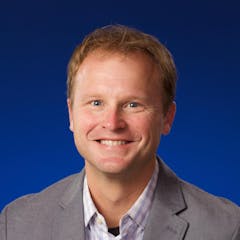What Happened at Vatican II
And How to Pray 50 Years Later

It was fifty years ago today that Roman Catholicism launched what many consider to be the most ambitious of its 21 ecumenical councils. Called the Second Vatican Council, or Vatican II, the three-plus-year series of gatherings began under Pope John XXIII on October 11, 1962, and concluded under Pope Paul VI on December 8, 1965. Half a century later, Vatican II remains the most recent of Catholicism’s official worldwide councils.
For those of us younger than fifty, all we’ve experienced of Roman Catholicism, whether from within or without, comes to us through the lens and practices of Vatican II. It’s an important reality to be aware of as we try to make sense of the (appropriately) deep rift between Protestants and Catholics on many central issues, and as we learn to get over our chronological snobbery and become aware of the full history of the church in her first fifteen centuries, and her unusual last half millennium.
Why Vatican II?
“For those of us younger than fifty, all we’ve experienced of Roman Catholicism comes to us through the lens and practices of Vatican II.”
In October 1958, Italian Cardinal Angelo Giuseppe Roncalli was elected pope at the age of 77. Ascending to the papacy at such an old age, he was expected to be a mere caretaker and bridge the short gap to the next ecclesiastical head. But less than three months into office, in January of 1959, he surprised many by calling for the convening of an ecumenical council. Over two years of formal preparations went into launching the meetings on October 11, 1962. It was the first council to be called in almost a century (Vatican I ended in 1870), and only the third since the Reformation (the Council of Trent spanned 1545 to 1563).
Many have summarized the core purpose of the council as adapting Roman Catholicism to the modern world. Summoning and beginning the council proved to be John XXIII’s most significant work as pope, as he died midway through the council on June 3, 1963.
What Vatican II Changed
Vatican II brought some major changes to the Roman church. Most obvious were changes in the mass, which had been said in Latin, with priests facing away from the congregation, often speaking quietly (even mumbling). It was impersonal at best and, for most, not understandable.
After the council, the feel of the mass changed drastically. It now was to be conducted in the language of the people, and participation was encouraged in new ways, with new possibilities granted for music and singing, and women allowed into upfront roles as readers, lectors, and Eucharistic ministers, as well as altar servers in some places (though some bishops and priests still discourage it). The sweeping reforms also included no longer forbidding Catholic attendance at Protestant services or reading from a Protestant Bible.
Another major course correction was Catholicism’s orientation on the Jewish people and non-Catholics. According to Catholic author Greg Tobin, this was
one of the most important theological and global breakthroughs, in terms of what came out of Vatican II. The church radically changed its position on the teaching about Jews, and really opened up to dialogue with the Jewish community; and encouraged — and demanded — that Catholics not consider the Jews as “other” or enemy but, in fact, as brothers and sisters under the same God. And it was a monumental shift in the position of the church and in the teachings of the church. So it was a sea change, in terms of the Catholic Church.
Vatican II aimed to produce not only a very different experience of the mass, but also a repositioning of the church in relation to the modern world. But many have wondered, despite all the felt flash points of change, whether it hasn’t proved to be much more than rearranging deck chairs on the Titanic.
What Vatican II Didn’t Change
Evangelicals should be careful to not assume that Vatican II changed more than it did. Shortly after the release of the council’s official documents, Reformed theologian and author Loraine Boettner, who lived through Vatican II and watched it with a careful eye, provided his perspective on the council’s effects (and lack thereof) in the preface of his book Roman Catholicism. Vatican II, he said,
repeated the claim that the Roman Catholic Church is the only true church, although it did recognize that other churches contain some elements of truth. . . . Pope John XXIII, who called the first session, and Pope Paul VI, who presided over the later sessions (as well as several prominent cardinals and theologians), took care to emphasize that no changes would be made in the doctrinal structure of the Church. However, Pope Paul did promulgate one new doctrine, which asserts that “Mary is the Mother of the Church.” The primary purpose of the Council was to update the liturgy and administrative practices and so to make the Church more efficient and more acceptable to the 20th century world.
Note the added italics: “no changes . . . in the doctrinal structure of the Church.” Boettner continues,
On previous occasions, Rome has changed her tactics when old methods became ineffective, but she has never changed her nature. In any religious organization, doctrine is the most basic and important part of its structure, since what people believe determines what they do. An official document, “The Constitution on the Church” prepared by the Council and approved by the Pope, reaffirms basic Catholic doctrine precisely as it stood before the Council met. . . .
If the Roman Catholic Church were reformed according to Scripture, it would have to be abandoned. But the gross errors concerning salvation still remain. Moreover, the Council did nothing toward removing the more than one hundred anathemas or curses pronounced by the Council of Trent on the Protestant churches and belief.
Boettner concluded that Vatican II
makes it abundantly clear that Rome has no intention of revising any of her basic doctrine, but only of updating her methods and techniques for more efficient administration and to present a more attractive appearance. This is designed to make it easier for the Eastern Orthodox, Anglican, and Protestant churches to return to her fold. There is no indication that she has any intentions of entering into genuine give-and-take church unity negotiations.
Her purpose is not union, but absorption. Church union with Rome is strictly a one-way street. The age-old danger that Protestantism has faced from the Roman Church has not diminished; in fact, it may well have increased. For through this less offensive posture and this superficial ecumenicism, Rome is much better situated to carry out her program of eliminating opposition and moving into a position of world dominance. An infallible church simply cannot repent.
Strong words, but a helpful perspective from a thoughtful evangelical contemporary of the council. Whether you consider Boettner’s concerns to be warranted or overstated, they should give today's evangelicals some pause about being too optimistic about what happened in the reforms of Vatican II.
How to Be Thankful and Pray
While Boettner may be wise to caution us about the increased danger facing the Protestant cause, in some sense, because of Vatican II, here are a couple other takeaways, from a more hopeful angle, for evangelical thankfulness and prayer.
First, we can be thankful that Vatican II finally freed Catholicism from the tyranny of Latin. It is tremendously sad to think of centuries of non-Latin-speaking Catholics sitting through a lifetime of masses, in which the Christian Scriptures were being read, but were not able to be understood, even at a surface level, in one’s own language. By and large (despite the apocryphal additions), the Catholic Church has the Christian Scriptures and reads from them in the mass.
“May God be pleased to use even the needle of truth in a haystack of error, to draw to his Son all sorts of ecclesiastically baptized unbelievers.”
Also, Vatican II has produced a heightened emphasis on Catholics reading the Scriptures for themselves. Despite the Church’s official doctrine and formal teaching, many Catholics have been born again through the hearing of the gospel through the public and private reading of the Scriptures. It is no small thing that the Scriptures are now read in the language of the people, rather than the traditional Latin. It’s bittersweet, but this is something we evangelical Protestants can be thankful for.
Finally, here’s one way, among many, to pray for Catholics. Pray that God would be pleased to use this hearing and reading of the Scriptures to give new birth in the pews and among the cloth. It is a powerful thing to have the word of God, and to read it in the language of the people, and to commend it for further study. May God be pleased to use even the needle of truth in a haystack of error, to draw to his Son all sorts of ecclesiastically baptized unbelievers, whether formally Catholic or Protestant, or none of the above.
Let’s not only consider what Jesus might say to Rome, but also pray for the Church in general, and especially the particular Catholics we know. It’s amazing what God often chooses to do through prayed-up, gracious, gospel-pointing conversations.




